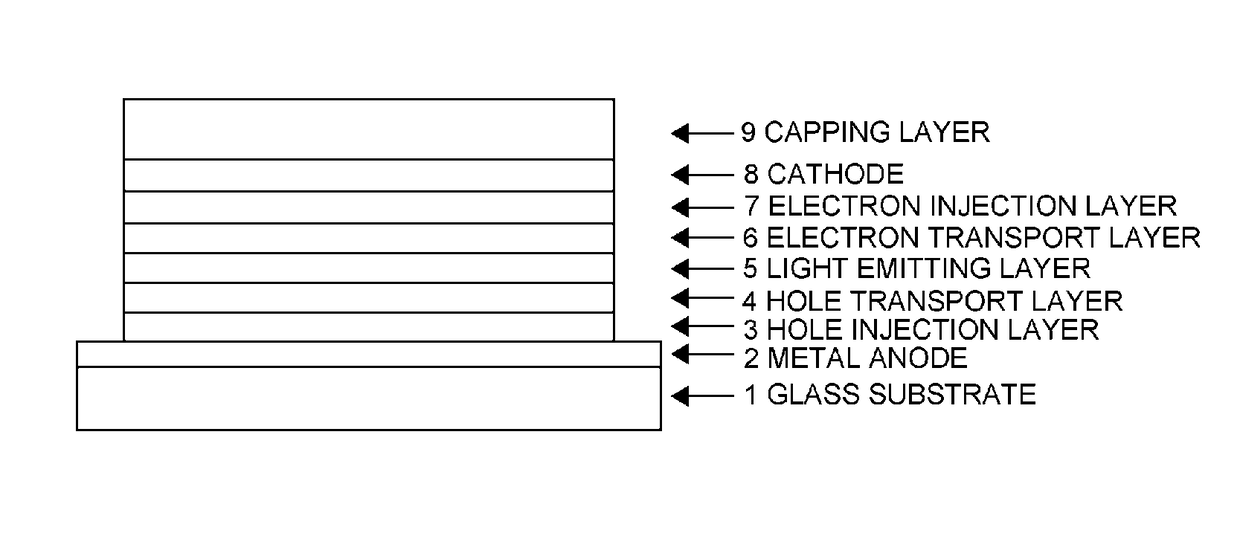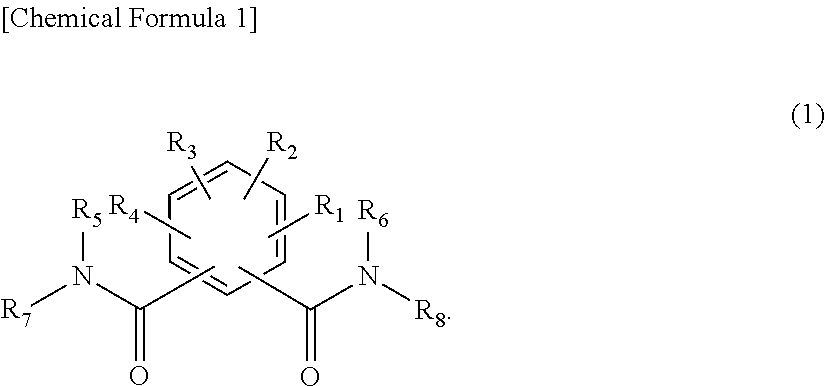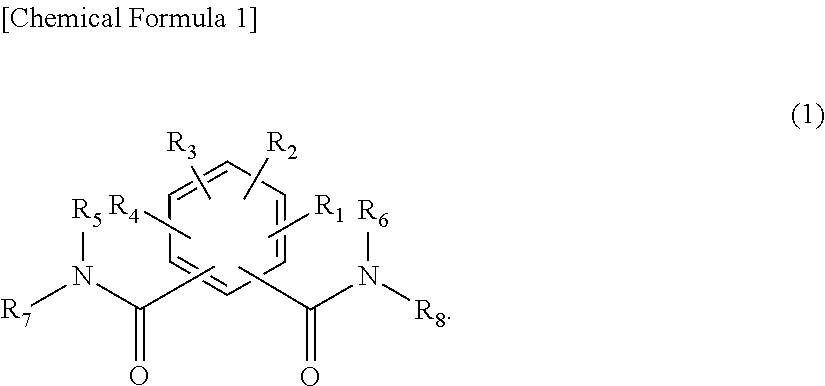Organic electroluminescent device
a technology of electroluminescent devices and organic materials, which is applied in the field of organic electroluminescent devices, can solve the problems of reducing registration accuracy, reducing the efficiency of semi-transparent electrodes and capping layers, and reducing so as to improve the coupling efficiency of organic el devices, improve the coupling efficiency of each color, and improve the effect of color purity
- Summary
- Abstract
- Description
- Claims
- Application Information
AI Technical Summary
Benefits of technology
Problems solved by technology
Method used
Image
Examples
example 1
[0086]The following describes the embodiment of the present invention in more detail using Examples. The present invention, however, is not limited to the following Examples. In the following, “parts” means “parts by mass” in all occurrences.
synthesis example 1
Synthesis of Exemplary Compound 1
[0087]Adamantylamine hydrochloride (7.6 g, 40.5 mM), triethylamine (8.2 g, 81.0 mM), and dioxane (150 ml) were added to a nitrogen-substituted reaction vessel. A dioxane solution (50 ml) of 5-tert-butyl isophthalic acid dichloride (5.0 g, 19.3 mM) was dropped into the vessel while stirring the mixture. The mixture was heated, and stirred at 65° C. for 8 hours. After being allowed to stand overnight, the reaction mixture was added to dilute hydrochloric acid (500 ml) while stirring the mixture. The precipitated crude product was collected by filtration, washed twice with water, and dispersed and washed with methanol twice. The product was dried at 60° C. under reduced pressure to obtain white crystals (9.0 g; yield 96.1%).
[0088]The structure of the obtained white crystals was identified by NMR.
[0089]1H-NMR (DMSO-d6) detected 44 hydrogen signals, as follows.
[0090]δ (ppm)=7.68-7.90 (5H), 2.09 (18H), 1.67 (12H), 1.32 (9H)
example 2
Synthesis Example 2
Synthesis of Exemplary Compound 2
[0091]Cyclohexylamine (12.6 g, 127 mM), triethylamine (13.4 g, 132 mM), and dioxane (300 ml) were added to a nitrogen-substituted reaction vessel. A dioxane solution (70 ml) of 4-tert-butylisophthalic acid dichloride (15.5 g, 60 mM) was dropped into the vessel while stirring the mixture, and the mixture was further stirred for 7 hours. After being allowed to stand overnight, the reaction mixture was added to water (1000 ml) while stirring the mixture. Hydrochloric acid was added until the solution pH was 3, and the mixture was stirred for 1 hour. The precipitated crude product was collected by filtration, water-washed, and dried at 60° C. under reduced pressure to obtain white crystals (22.3 g; yield 96.6%).
[0092]The structure of the obtained white crystals was identified by NMR.
[0093]1H-NMR (DMSO-d6) detected 36 hydrogen signals, as follows.
[0094]δ (ppm)=8.01 (1H), 7.89-7.91 (4H), 3.76-3.81 (2H), 1.85-1.87 (4H), 1.75-1.76 (4H), 1....
PUM
| Property | Measurement | Unit |
|---|---|---|
| thickness | aaaaa | aaaaa |
| refractive index | aaaaa | aaaaa |
| voltage | aaaaa | aaaaa |
Abstract
Description
Claims
Application Information
 Login to View More
Login to View More - R&D
- Intellectual Property
- Life Sciences
- Materials
- Tech Scout
- Unparalleled Data Quality
- Higher Quality Content
- 60% Fewer Hallucinations
Browse by: Latest US Patents, China's latest patents, Technical Efficacy Thesaurus, Application Domain, Technology Topic, Popular Technical Reports.
© 2025 PatSnap. All rights reserved.Legal|Privacy policy|Modern Slavery Act Transparency Statement|Sitemap|About US| Contact US: help@patsnap.com



